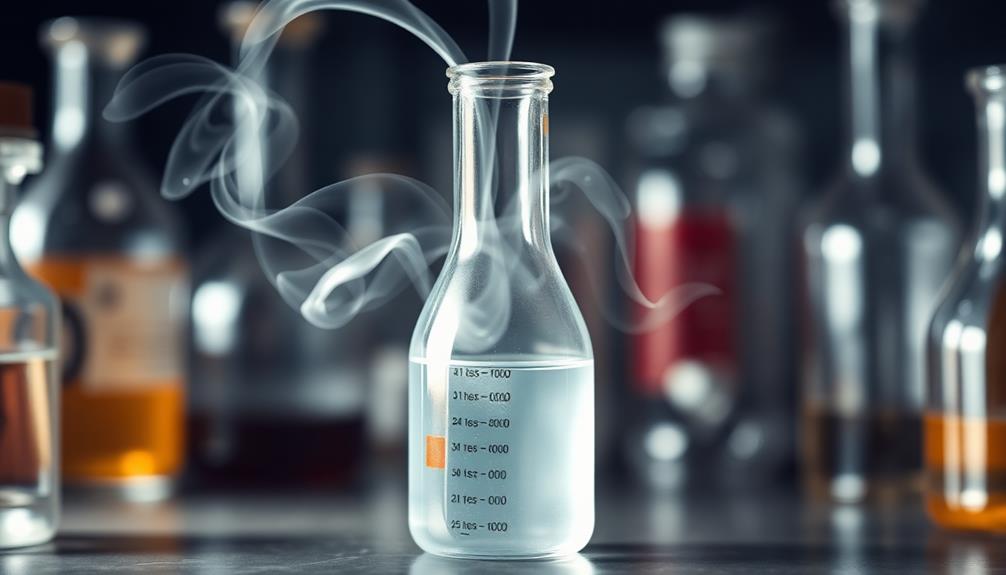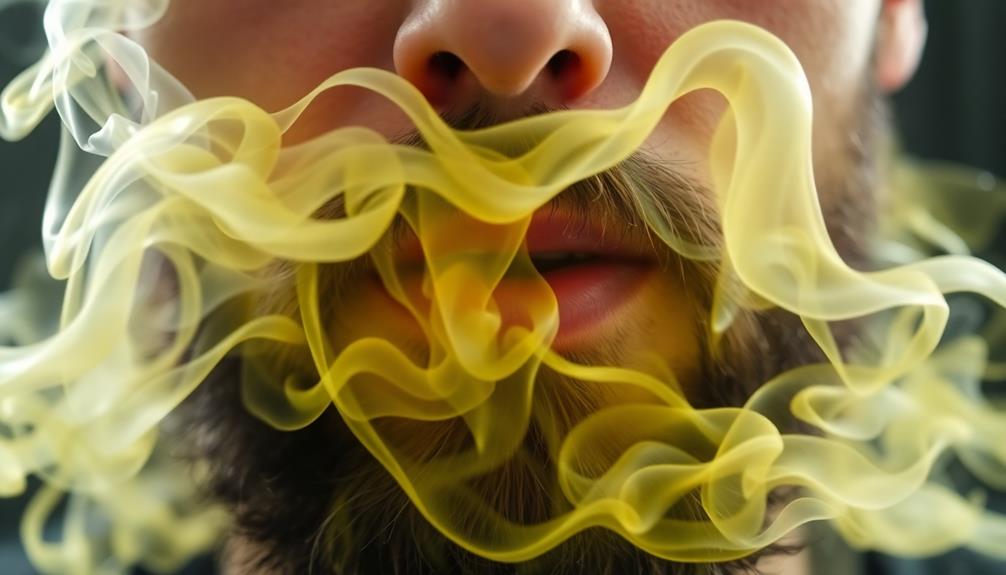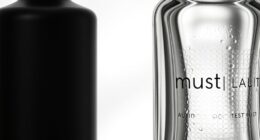Ether has a sweet and pleasant smell, often compared to mint or ripe fruit. This distinctive aroma sets it apart from harsher chemicals like methanol or acetone. You'll notice that ether easily evaporates, filling the air quickly, which can evoke strong memories, especially in lab settings. While the scent might seem inviting, remember that ether is highly flammable and can cause dizziness if inhaled in high concentrations. So, always handle it with care! There's so much more to learn about ether, including its fascinating history and significance in science, so keep exploring!
Key Takeaways
- Ether has a sweet, fruity aroma that can be reminiscent of mint or ripe fruit.
- Its distinctive scent is generally favored over harsher solvents like methanol or acetone.
- The smell is highly volatile, quickly filling the air in laboratory settings.
- Nostalgic associations exist due to its historical use as an anesthetic in the 19th century.
- The aroma can evoke strong emotional responses, linked to past experiences with ether.
Introduction

When you think of ether, its distinct aroma often comes to mind. Diethyl ether has a sweet, pleasant smell that some people describe as minty or fruity. This alcohol smell can be quite strong, especially in concentrated areas like laboratories. Despite its relatively pleasant scent, diethyl ether is highly volatile and evaporates quickly, filling the air with its characteristic odor. The amber fragrance description, often associated with resinous or warm, earthy scents, contrasts with ether’s lighter, more fleeting aroma. While ether’s smell might evoke a clinical environment, it lacks the depth and richness typically found in amber-like fragrances.
It's important to remember that while the scent may be appealing to some, it can also be overwhelming and evoke strong sensory memories for those familiar with its use.
Due to its low boiling point of 34.6 °C (94.3 °F), diethyl ether is very volatile, which means its aroma travels quickly through the air. However, this volatility comes with risks since ether is highly flammable, with a flash point of -45 °C. If not handled properly, it can create explosive mixtures with air.
Exposure to ether vapors can affect your nervous system, leading to dizziness or respiratory issues.
Description of the Smell
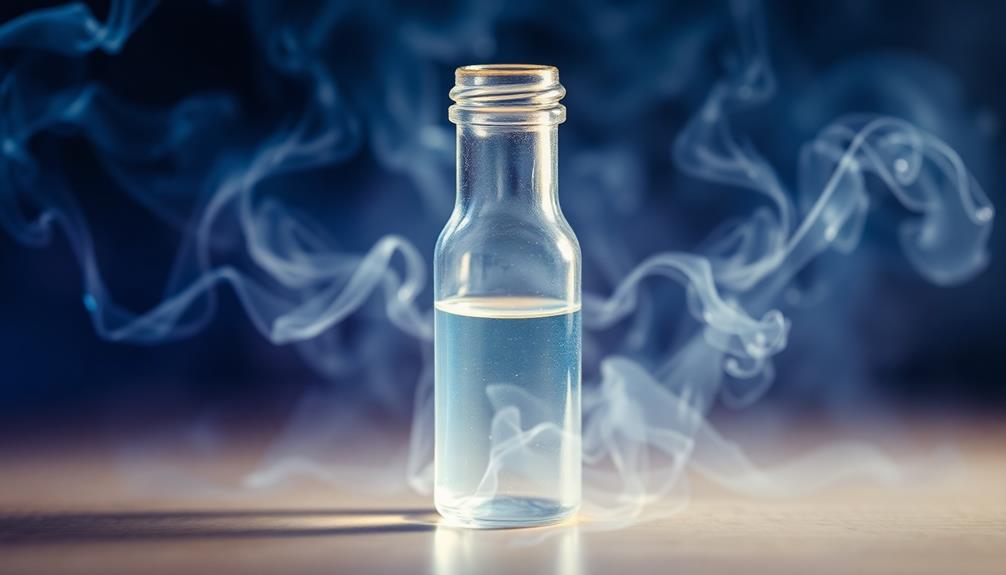
Diethyl ether's aroma captivates many with its sweet, almost fruity scent that can instantly transport you to a laboratory setting. It's often compared to the smell of mint or ripe fruit, making it quite pleasant. As a highly volatile compound, diethyl ether easily evaporates, quickly filling the air with its distinctive fragrance. This characteristic is due to its low boiling point of 34.6 °C (94.3 °F), so you might notice it even in small amounts.
What's more, diethyl ether's aroma is generally favored over harsher solvents like methanol or acetone, which can be quite unpleasant. This sweet scent brings a nostalgic vibe, especially since it was historically used as an anesthetic. Many people still associate its smell with medical settings, where it played a significant role.
If you ever catch a whiff of diethyl ether, you might find it surprisingly inviting, despite its strong presence. Its high therapeutic index also adds to its charm, as it was once trusted for its safety in anesthesia.
Source and Composition

The fascinating world of diethyl ether begins with its chemical composition and production methods. Diethyl ether, with the chemical formula C4H10O, is a colorless liquid known for its characteristic sweet smell. Many people describe this aroma as pleasant and reminiscent of fruity scents, which makes it quite intriguing!
One of the reasons diethyl ether has such a distinct odor is its volatility. With a boiling point of 34.6 °C (94.3 °F), it easily evaporates into the air, releasing its sweet scent.
It's important to note that diethyl ether is highly soluble in substances like alcohol and acetone, but it doesn't mix well with water. This property affects how it's used in various chemical processes.
Diethyl ether is primarily made as a byproduct of the vapor-phase hydration of ethylene to produce ethanol. It can also be synthesized by dehydrating ethanol.
While the sweet, minty aroma of diethyl ether has led to its historical use as an anesthetic, remember that its flammability poses significant safety risks. So, always handle it with care!
Typical Scenarios or Environments
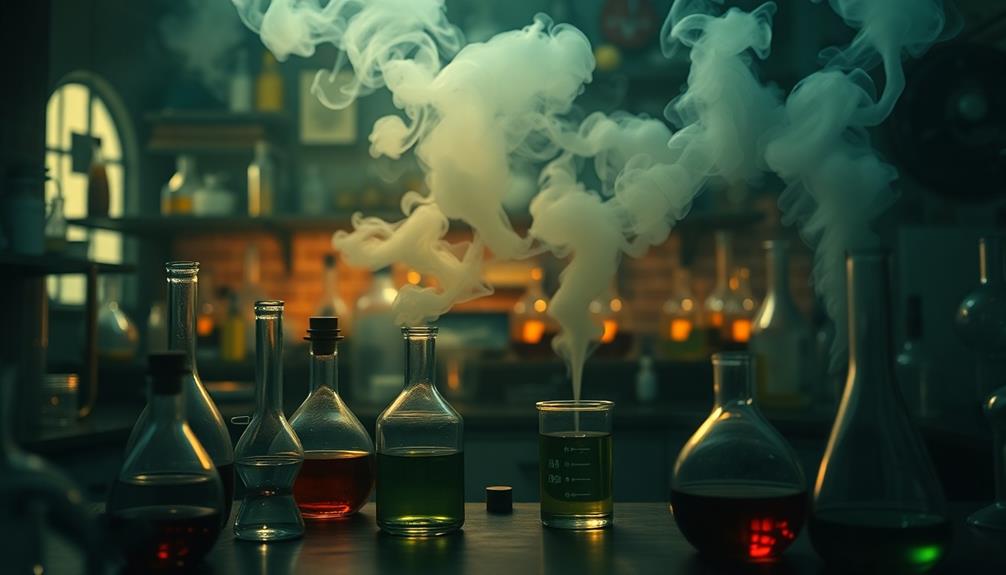
You might encounter diethyl ether in various laboratory settings, where its sweet, minty aroma fills the air as researchers conduct experiments. This pleasant odor makes it one of the more appealing-smelling solvents, often used in chemical processes like Grignard reactions.
However, you should be cautious, as the smell can become overwhelming in poorly ventilated areas. Always make sure to follow safety measures and ensure good ventilation.
In addition to its laboratory uses, diethyl ether has a historical role as one of the first anesthetic agents. Imagine the distinct scent wafting through medical settings in the 19th century during surgeries—it became a familiar part of medical procedures.
While the aroma can be pleasant, remember that diethyl ether is highly flammable. Its vapors can travel long distances, so it's crucial to handle it with care.
Whether you're in a lab or recalling historical medicine, the experience of diethyl ether's scent can be unique. Just keep in mind the safety protocols and the importance of ventilation, ensuring a safe and enjoyable environment for everyone involved.
Emotional or Cultural Associations
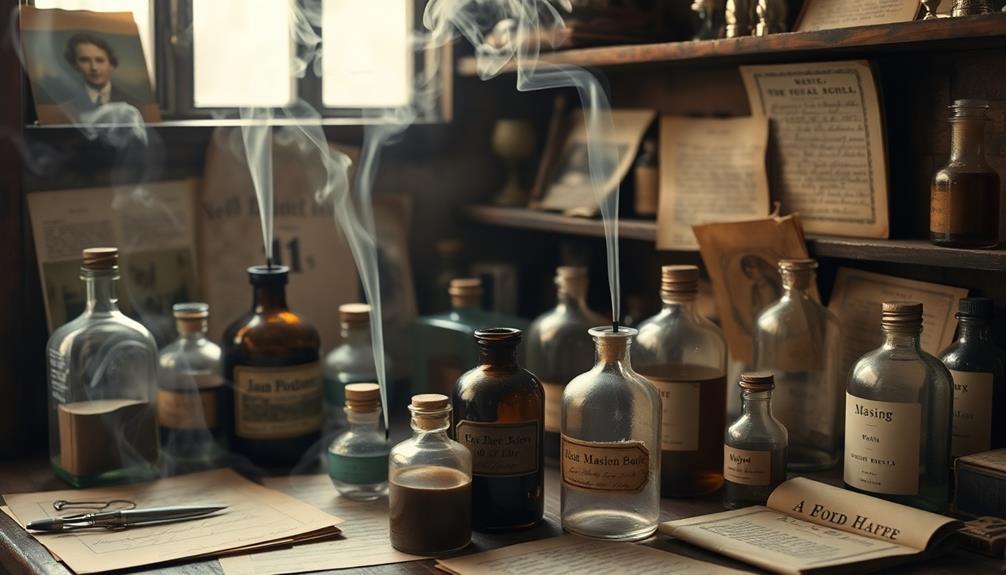
Whiffs of diethyl ether can trigger a wave of nostalgia, transporting many to the medical practices of the 19th century when it served as a groundbreaking anesthetic. Its sweet smell brings back memories for some, reminding them of old hospitals and doctors. But there's more to this scent than just history.
In the 1800s, people also inhaled diethyl ether for fun, creating what they called "ether frolics." These gatherings show how fascinated society was with the psychoactive effects of ether. However, this fascination has a darker side. Some users developed psychological dependence, a condition known as etheromania, which highlights the complex relationship between people and this substance.
In certain cultures, like among the Lemkos, diethyl ether has been used recreationally for generations, adding to its mysterious allure. The unique aroma can evoke strong emotional responses, connecting individuals to their past experiences.
Health or Safety Considerations
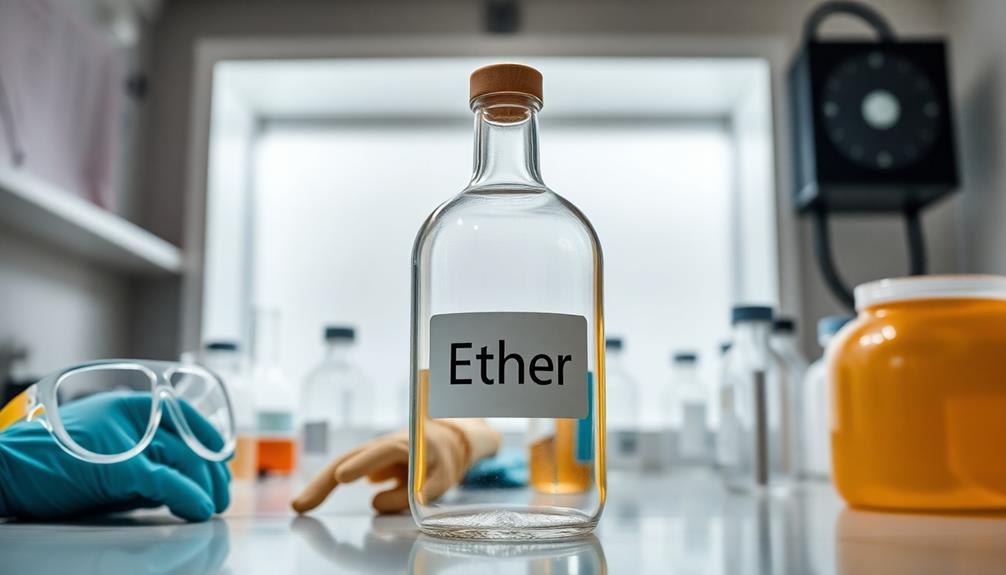
Many may find diethyl ether's sweet aroma enticing, but it's important to recognize the health and safety risks associated with its use. Although it smells pleasant, exposure to diethyl ether can lead to some serious health risks. For instance, inhaling high concentrations can cause dizziness, headaches, and even respiratory issues. That's why it's crucial to work in well-ventilated areas when using it.
Another major concern is its flammability. Diethyl ether can form explosive mixtures with air, so you should always follow strict safety measures. Make sure to keep it away from heat sources and open flames!
Wearing personal protective equipment (PPE), like gloves and goggles, is essential when handling ether to protect your skin and eyes.
Long-term exposure to ether can potentially harm your liver and kidneys, so regular monitoring of air quality in workspaces is vital. Always be aware of the concentrations you're dealing with, as some levels can be immediately dangerous to your health.
Final Thoughts

Wrapping up our discussion on diethyl ether, it's clear that while its sweet, minty aroma can be inviting, caution is essential when handling this volatile solvent.
Its pleasant scent might make you think it's harmless, but remember that diethyl ether is extremely flammable. You should always work in a well-ventilated area to avoid overwhelming your senses with its strong odor.
Historically, diethyl ether was used as an anesthetic, which highlights its powerful effects.
Although it's no longer a common choice for that purpose, its ability to affect the central nervous system (CNS) means you need to treat it with respect.
When inhaled, it can cause irritation, so it's vital to be aware of your surroundings.
Frequently Asked Questions
What Is the Smell of Ether?
When you encounter ether, you'll notice its sweet, pleasant odor, often described as minty or fruity. This distinctive scent can linger and serves as a warning due to its flammable nature in various environments.
What Are the Side Effects of Smelling Ether?
When you smell ether, you might experience dizziness, headaches, or respiratory irritation. Prolonged exposure can dry out your skin and lead to more serious health issues, including liver damage and unconsciousness in high concentrations.
Why Do I Smell Ether in My House?
If you smell ether in your house, it likely means there's a leak from products like solvents or adhesives. You should investigate the source, ensure proper ventilation, and address any safety concerns immediately.
Does Ether Have Fruity Smell?
No, ether doesn't have a fruity smell. While some people might find its sweet aroma pleasant, it lacks the fruity notes found in other solvents like esters. Its scent is more minty or invigorating.
